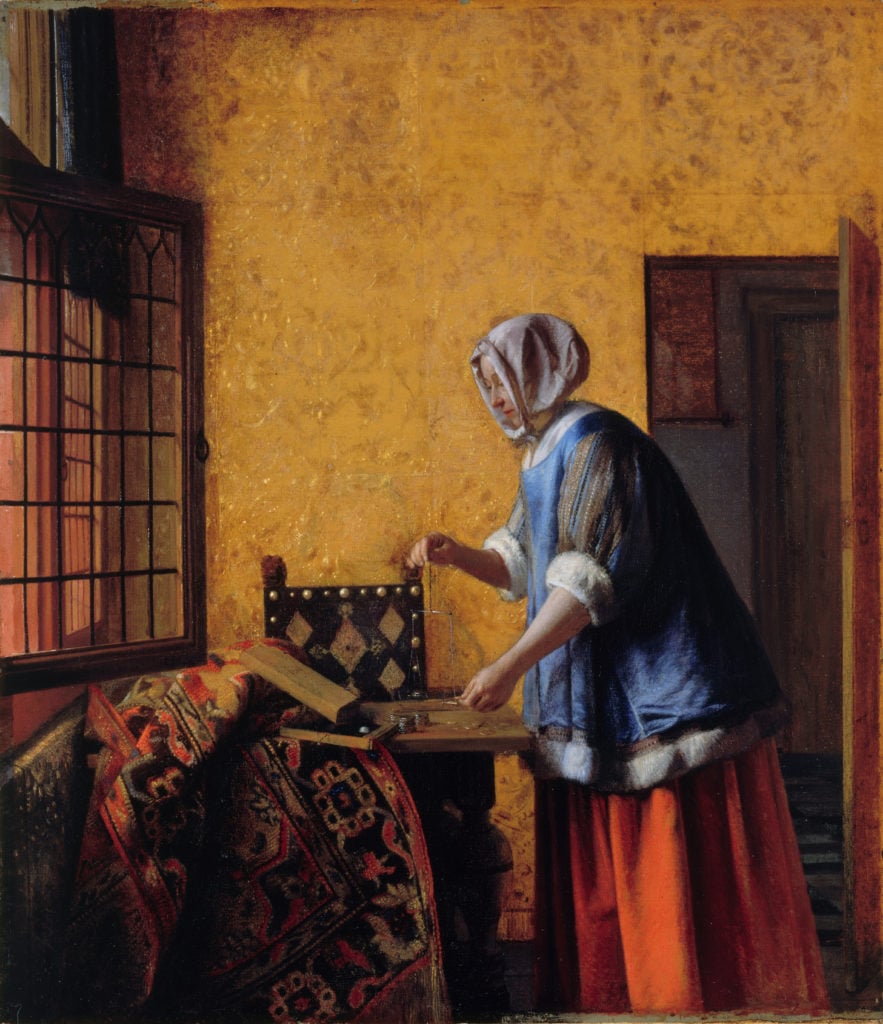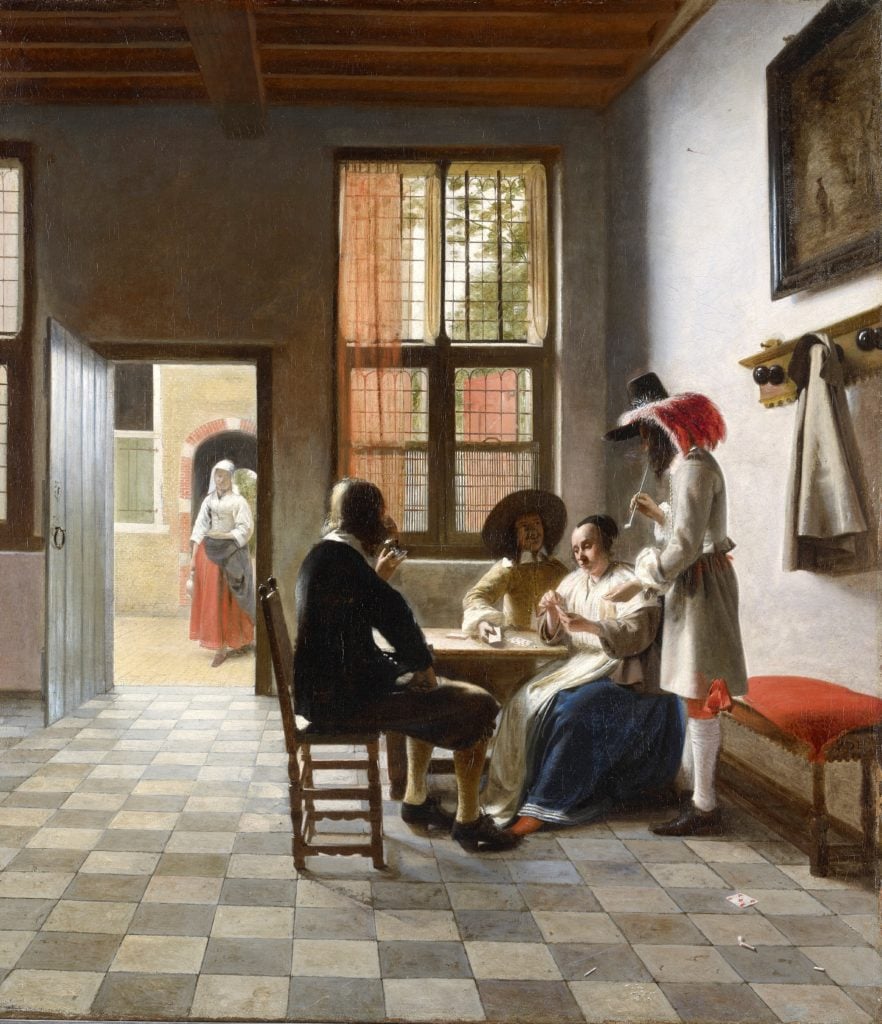Art World
Experts Discover the Secrets of a Dutch Old Master’s Paintings After Nearly 400 Years
Eagle-eyed conservators spot Pieter de Hooch's cleverly concealed signature, fingerprint, and a fleet of ghost ships ahead of a major exhibition.

Eagle-eyed conservators spot Pieter de Hooch's cleverly concealed signature, fingerprint, and a fleet of ghost ships ahead of a major exhibition.

Caroline Elbaor

When the Dutch Old Master Pieter de Hooch painted a woman weighing gold and silver coins, he signed his canvas in an unusual place. Nearly 400 years later an eagle-eyed conservator spotted the artist’s name slyly incorporated into the frame of an open window within the painting.
It is one of three intriguing discoveries made by experts working on a major survey organized by the Museum Prinsenhof Delft in the Netherlands. As well as his signature, experts have discovered the artist’s fingerprint in another canvas.
The exhibition “Pieter de Hooch in Delft: From the Shadow of Vermeer” is the artist’s largest survey in a generation, and the first in the Netherlands. It features 29 works and concentrates on De Hooch’s most prolific period in the 1650s, during which the city of Delft played a central role.
The new findings were made as a result of research for the exhibition. The signature in A Woman Weighing Gold and Silver Coins (around 1644) was spotted by conservator Johanneke Verhave and co-curator Katja Kleinert when they were preparing the painting for the show. Verhave detected fragments of the signature “P.D. HOOCH” in the window frame.

Pieter de Hooch, Cardplayers in a Sunlit Room (1658). Image courtesy The Royal Collection / HM Queen Elizabeth II 2019.
Anita Jansen, the senior curator at Museum Prinsenhof Delft and the exhibition’s co-curator, says: “Research on techniques during the past two years revealed that De Hooch often signed his paintings on a window frame. If you next encounter remnants of paint in precisely that spot, alarm bells [should] go off.”
As with the signature, the fingerprint found in Cardplayers in a Sunlit Room (1658) was also identified ahead of the exhibition, again by a conservator. Krista Blessley of the Royal Collection in Britain made the discovery as was packing the work for shipment to the Netherlands.
The painting, which has been lent by Queen Elizabeth II, portrays card players mid-game seated in a tiled room. The fingerprint, thought to be the artist’s thumb, which is impressed onto the tiled floor, was mostly likely imprinted while the paint was still wet. Jansen speculates that the artist left his mark when lifting the freshly painted canvas from an easel.

Pieter de Hooch, A Dutch Courtyard (1658-1660). Image courtesy National Gallery of Art, Washington, D.C., Andrew W. Mellon Collection.
Underdrawings of ships’ masts were found in A Dutch Courtyard (around 1658-60), following infrared imaging conducted at the National Gallery of Art in Washington, D.C. The masts were spotted in the upper left corner of the canvas, as if the ship were “floating” in the sky. The artist depicted the masts of rigged ships far too large to sail into the city of Delft at the time of the painting, suggesting that the drawings either belonged to an earlier, discarded draft of a work, or rather, a recycled canvas.
The museum’s Pieter de Hooch show has proven to be highly successful, drawing 30,000 visitors since it opened in October. It is on course to beat the attendance of the institution’s 2016 exhibition “Vermeer Returns Home” which is apt given the 17th-century artists’ rivalry.
“Pieter de Hooch: From the Shadow of Vermeer,” October 11 through February 16, 2020, Museum Princenhof Delft.